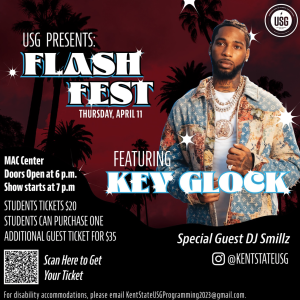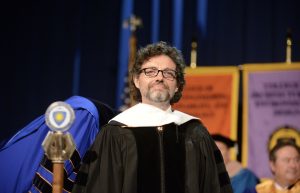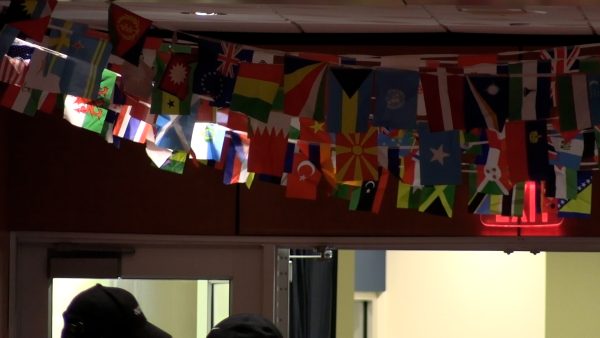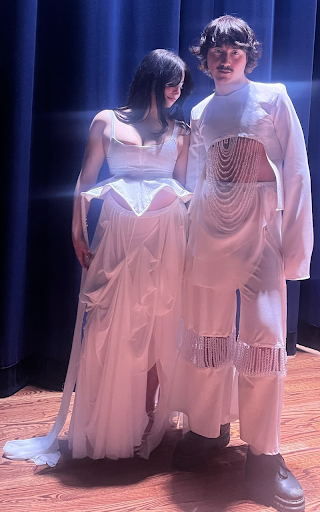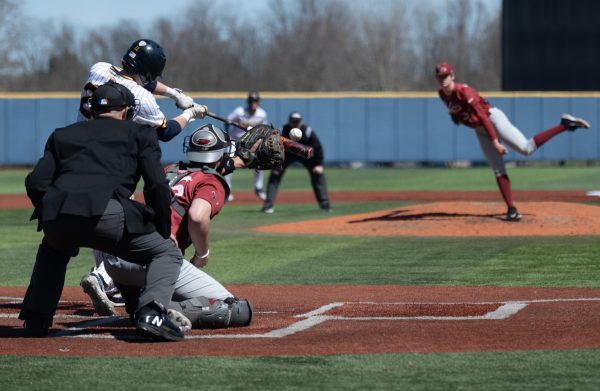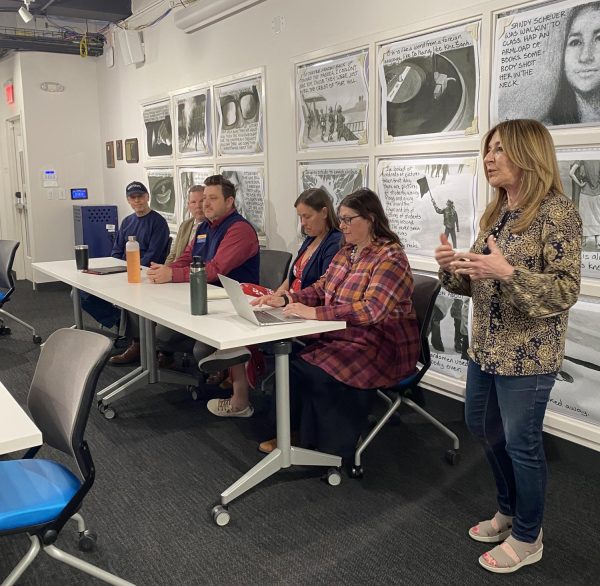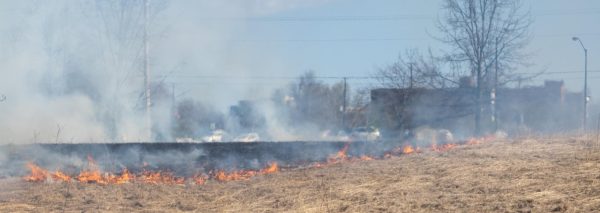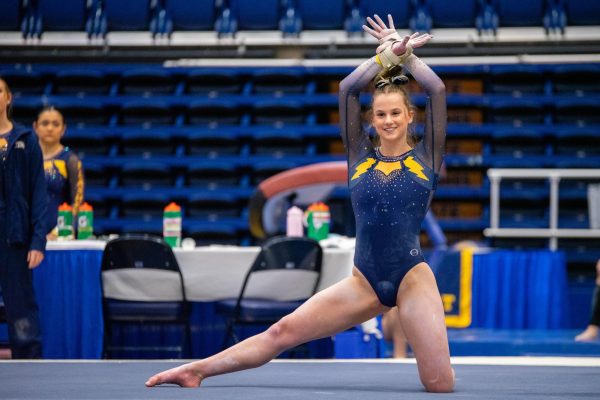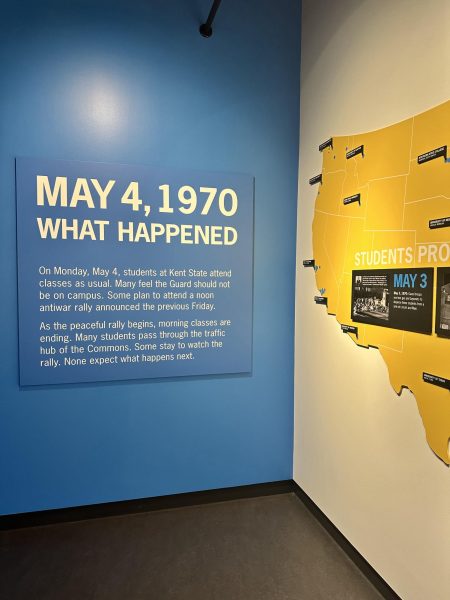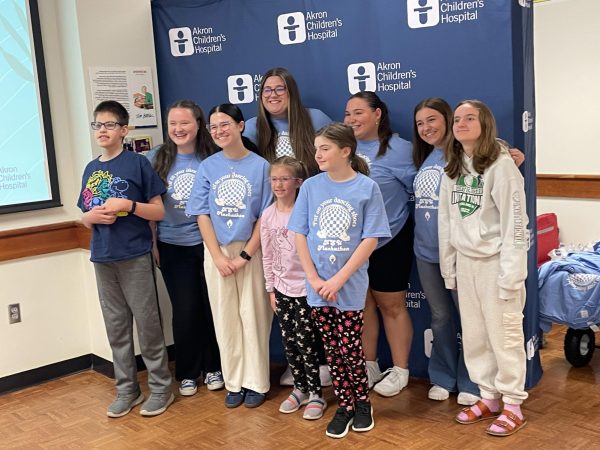Weekend aviation fair soars despite rain delay
September 8, 2008
Annual event offers entertainment for all
The 14th annual Aviation Heritage Fair had a rainy start Saturday at the Kent State University Andrew Paton Field in Stow.
The fair offered entertainment for aeronautics enthusiasts and professionals, as well as Kent State students, families and children.
“The heritage fair is a great event. I’ve come every year that I’ve been at the university,” President Lester Lefton said. “It is a wonderful opportunity for Kent and the city of Stow to partner, along with Kiwanis and the Stow-Monroe Chamber of Commerce, to celebrate aviation, to celebrate our relationship with one another and to celebrate our great students who are engaged in the study of aviation and will be our future pilots.”
Isaac Richmond Nettey, associate dean for the College of Technology, orchestrated this year’s heritage fair. Nettey said despite rainy conditions in the morning, the community turnout was still strong.
Because of the weather, the morning hot air balloon launch was canceled and many were forced to stay under the shelter of the hangar.
The Stow- Monroe Falls Kiwanis Club cooked and served a pancake breakfast. All proceeds went toward the annual Stow-Monroe Falls Kiwanis aviation scholarship, now in its fifth year.
Lefton and Stow Mayor Karen Fritschel presented a $1,000 scholarship to Matthew Loveday, senior flight technology major. Loveday said he hopes to work at Andrew Paton Field as a flight instructor when he graduates and then for Continental Airlines as a pilot.
The scholarship requirements are completion of 30 credit hours or more, at least a 3.2 GPA and submission of a letter of recommendation as well as a winning essay.
Local vendors lined the inside of the hangar and set up outside when the rain passed shortly after 11 a.m. Vendors included the Commercial Aviation Corporation; Cleveland Airport System; Stow-Kent Chiropractic; Cleveland Aeronautics Modeling Society; Guitars for Grunts – an organization sending guitars to troops in Iraq and Afghanistan; R.S.V.P. Food and Party Outlet and many more.
Children were invited to take part in the festivities at family tents filled with games and activities.
The Cleveland Aeronautics Modeling Society orchestrated a remote-controlled air show using “giant scale” model airplanes. Ron Shonk, district 3 director of the International Miniature Aircraft Association, said that these 2-cylinder model planes can reach speeds of 95 mph. The planes are not supposed to be flown any higher than 500 feet.
Shonk said the group constructs these airplanes by “scratch building” – building without a kit. The builders must wire and install the remote control system on their own. The motor is similar to that of a weed eater, but is made specifically for motor airplanes. The planes run on a mixture of gas and oil.
In order to build giant scale model airplanes, participants must belong to the Academy of Model Aeronautics.
The fastest plane was the Cirrus SR 22 G3 turbo. Civil patrol volunteers stayed overnight to monitor the field and ensure the safety of the planes.
The Piper Seminole Plane with “Carol A. Cartwright” painted on the side, was the only 2-engine plane exhibited.
William T. Koleno, manufacturing engineer for Titan Aircraft, showed two T-51 Mustang Replicas. Koleno said that this type of plane would have been flown in the Pacific during World War II.
One of the planes had black and white stripes painted by the tail of the plane and black swastikas outlining the bottom of a passenger window. Koleno said that the black and white stripes represented planes that flew in the D-day invasion.
Other aircrafts present were a Fed Ex one-person-crew plane along with a helicopter for Cleveland Metro Life Flight.
The College of Technology offered plane rides. Two F-16 I Fighting Falcons from the Toledo Express Airport and the 180th fighter wing flew by. The first plane was flown by lead pilot Major Handy and copilot Colonel Northouse. The second plane was piloted by Major Silence.
John Kovach, a 1976 Kent State University graduate in aerospace technology was present at the fair. Kovach said he was at Kent’s first aviation day, he called the “Expo” in 1975.
Kovach has worked for 31 years in the aeronautics field and was impressed by what the Aviation Heritage Fair has become.
Kovach said he had not been back to the fair since its first run in 1975. Since then, he has seen a tremendous growth in the crowd and interaction, in the number of displays shown at the fair and in the growth of aviation.
The growth of the aviation program was quite clear.
“The College of Technology’s aviation program is one of the biggest and best in the country. It has grown substantially over the last few years under Dr. Isaac Richmond Nettey’s leadership,” Lefton said. “We have students from all over the state of Ohio and from all over the country seeking to come to our aviation program. It’s very likely that if you’re flying the Continental Airline flight out of Cleveland, particularly on one of the smaller jets, the pilot or the copilot is likely to be a graduate of Kent State University. We’re very proud of the aviation program and the air traffic controller program, which is closely associated with it.”
Contact College of Technology reporter Abbey Linville at [email protected].








